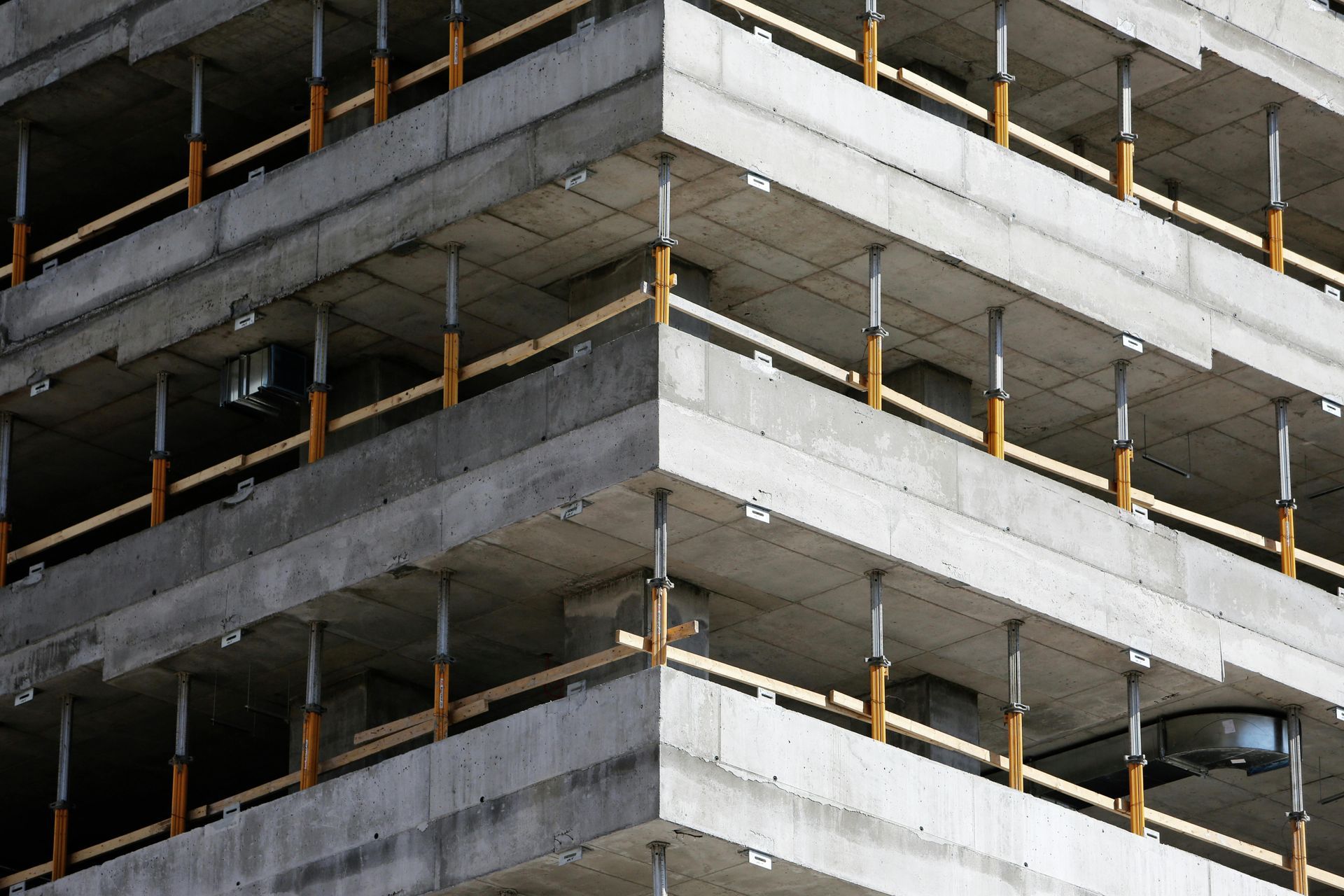In 2025, the appetite for
airspace and rooftop development continues to grow across the UK’s urban landscape. As land scarcity intensifies, developers and property owners are turning their attention upward — adding new floors above existing residential or commercial buildings to create value without new ground acquisitions.
This strategy, once considered niche, has matured into a recognised sub-sector of development finance. Advances in engineering, modular construction, and permitted development (PD) rights have made vertical extensions not only feasible but financially compelling. However, from a lender’s perspective, these projects demand a level of precision and due diligence far beyond that of a typical ground-up scheme.
At Willow Private Finance, we’ve seen how lenders now evaluate airspace proposals: they focus on
structural feasibility, title rights, insurance, planning clarity, and exit liquidity. The opportunity is substantial, but so is the scrutiny. Understanding how to structure these projects for funding is essential to unlocking their full potential.
For related insights, see
Development Finance for Commercial Conversions in 2025 and
Planning Risk in Development Finance: How Much Certainty Do You Need in 2025?.
Market Context in 2025
The UK’s urban property market faces a dual challenge: rising demand for housing and diminishing land supply. Airspace development offers a rare solution that creates additional residential or mixed-use space without expanding the urban footprint.
Government policy has continued to support densification. Permitted Development rights, introduced in 2020 and extended in recent years, allow certain residential and commercial buildings to add up to two extra storeys without full planning permission, provided they meet design, access, and structural criteria.
Yet lenders remain selective. They recognise the opportunity but are acutely aware of the technical complexity. Projects must not only prove structural capacity but also demonstrate that all legal, title, and insurance issues have been addressed.
In 2025, lender appetite for rooftop and vertical extensions is strong in London, Manchester, Birmingham, and regional hubs with housing supply shortages. Appetite is more limited in areas with weaker demand or where planning controls on visual impact are tighter. The market has matured — but only the best-prepared borrowers will achieve full funding.
Understanding Airspace Development Finance
Airspace development finance operates under the same broad principles as traditional development funding, but with critical differences in how risk is assessed and mitigated.
Lenders first evaluate
title and ownership. The borrower must own, or have a legally registered right to develop, the airspace above the existing structure. Where the building contains leasehold flats, the freeholder’s rights are essential, and lenders insist on legal confirmation that the airspace is fully demised and unencumbered.
The second factor is
structural integrity. A lender’s valuer and monitoring surveyor will require engineering reports confirming that the existing structure can support additional floors — or that the proposed reinforcement design is viable. This step often determines whether lenders will view the scheme as a conversion (lighter risk) or as full construction (higher risk).
The third element is
build methodology. Modern methods of construction (MMC), particularly modular or lightweight steel systems, have become central to these schemes. Lenders familiar with such approaches are increasing in number, but they demand evidence of accreditation, warranties, and insurance coverage for all prefabricated elements.
These nuances make lender selection crucial. At Willow Private Finance, we maintain direct relationships with lenders who actively fund airspace and rooftop extensions, allowing clients to avoid time-consuming rejections from lenders with limited experience in this area.
Planning and Permitted Development
While PD rights simplify some aspects of airspace construction, they do not eliminate the need for detailed planning scrutiny. Lenders expect full documentation confirming that all conditions are met — from design and materials to access, amenity, and daylighting standards.
Even under PD, prior approval from the local authority is required, covering structural adequacy, transport impact, and visual design. Projects in conservation areas or affecting listed buildings fall outside PD scope and require full planning permission.
In 2025, lenders have tightened their requirements for
planning certainty. Before releasing initial drawdowns, they often insist on copies of the approved plans, engineering assessments, and correspondence confirming compliance with Building Regulations Part A (structure), Part B (fire safety), and Part M (accessibility).
Timing is also critical. Many developers underestimate the time needed to discharge PD conditions. Lenders want to see a credible programme — one that aligns approval, structural sign-off, and construction sequencing without gaps that could trigger facility extensions or cost overruns.
Valuation and Exit Considerations
Airspace valuations differ fundamentally from ground-up development valuations because the underlying land is already developed. Instead of valuing the site as vacant, valuers assess the uplift in GDV resulting from the proposed addition, subtracting construction and associated costs to calculate residual value.
Lenders rely on conservative assumptions, often applying a discount to projected sales values for upper-storey units that may have unconventional layouts or access. In mixed-use schemes, lenders also assess the impact of construction on existing occupiers and how this may affect rent collection or operational continuity.
Exit strategy is a major focus. For sale exits, lenders want evidence of buyer demand and mortgageability for new units created through rooftop extensions. For refinance exits, they assess whether long-term lenders (particularly private banks or building societies) will be comfortable with the structural modifications and warranties in place.
Projects supported by recognised warranty providers such as NHBC, Build-Zone, or LABC Warranty generally attract stronger lender confidence. In 2025, many lenders will not fund new vertical schemes without 10-year latent defect insurance confirmed at credit stage.
Structural Risk and Insurance
Airspace projects pose unique engineering challenges. Load-bearing assessments, structural warranties, and fire-safety design reviews have become non-negotiable. Following updates to the Building Safety Act, lenders are particularly sensitive to compliance for buildings above 18 metres.
Most lenders now require a
structural engineer’s certificate confirming that the proposed load paths and reinforcement strategies are sound. This is reviewed alongside insurance certificates covering contractor all-risk, professional indemnity, and defects liability.
Borrowers must also address
access and logistics. Rooftop construction often requires crane permits, scaffold licensing, and temporary relocation arrangements for residents below. Lenders expect a logistics plan supported by method statements from the main contractor.
These detailed preparations demonstrate borrower competence — a decisive factor in achieving high leverage and favourable pricing.
Funding Structures in 2025
Lender structures for rooftop and vertical extensions fall into three broad categories in 2025:
- Senior development loans for projects with full planning or PD approval, typically covering 65–75% of total cost.
- Stretch senior facilities for experienced borrowers, reaching 80% LTC where design, engineering, and exit risk are well mitigated.
- Bridging-to-development finance for acquisition or early enabling works, transitioning to a main facility once approvals and warranties are in place.
Facilities are usually drawn in stages based on verified progress, certified by an independent monitoring surveyor. Interest is often rolled up into the facility to maintain developer liquidity.
Where existing leases or tenants are involved, lenders may include conditional drawdowns to ensure vacating, access, or notice requirements are satisfied before major works commence. The more complex the building ownership, the more structured the funding becomes.
Common Challenges Borrowers Face
The most frequent obstacles to funding airspace schemes include incomplete title rights, underestimated build costs, and delays in engineering verification.
In multi-leasehold buildings, developers sometimes assume that PD rights override lease restrictions — an error that can derail funding. Lenders require solicitor confirmation that all leaseholders have either consented or been lawfully notified.
Under-costing is another recurring issue. Vertical extensions require bespoke foundations, lift installations, and utility upgrades. Lenders now benchmark cost plans against comparable projects, rejecting budgets that appear artificially low.
Finally, the timing of condition discharge remains a point of contention. Projects that assume immediate commencement after PD approval often face lender pushback. Experienced brokers help developers set realistic timetables and build sufficient contingency into both cost and time allowances.
Smart Structuring for 2025
Success in securing airspace development finance now depends on preparation and transparency. Developers who approach lenders with detailed engineering documentation, accurate cashflows, and legal clarity achieve faster approval and better leverage.
Key to this process is sequencing. Lenders respond positively to phased drawdowns that mirror project risk: acquisition or refinance, pre-construction engineering, main works, and exit. Each tranche should have clear conditions precedent, creating a risk-managed narrative that aligns with lender expectations.
Another essential step is
early lender engagement. Waiting until planning or PD approval is complete can limit options. Many specialist lenders are prepared to issue indicative terms during the design phase, enabling developers to plan cashflow and negotiate contractor pricing with confidence.
Transparency on exit is equally vital. Whether units are to be sold individually or retained for rental, lenders want a credible path to repayment or refinance. Providing early correspondence from potential investment or term lenders adds further assurance.
Outlook for 2025 and Beyond
Airspace and rooftop extensions are set to remain a key component of urban housing strategy well beyond 2025. As cities pursue densification without compromising greenfield land, the combination of modular construction, digital design, and targeted PD reform will make vertical growth increasingly viable.
Lenders are adapting accordingly. While due diligence will remain exacting, funding availability is likely to expand as specialist funds gain experience with these schemes and as data on structural performance and market absorption improves.
Developers who treat airspace projects with the same rigour as major new-build schemes — integrating planning, engineering, and finance from day one — will continue to secure the most competitive terms.
How Willow Private Finance Can Help
Willow Private Finance specialises in sourcing development funding for complex and non-standard projects, including airspace, rooftop, and vertical extensions. We work with the lenders who truly understand the engineering and legal nuances, ensuring clients present robust, compliant, and finance-ready proposals.
Our experience spans both residential and mixed-use densification projects across the UK. Whether you’re extending a London apartment block, converting a regional office rooftop, or delivering modular penthouses above existing structures, we can structure funding that protects your liquidity and aligns with lender criteria.
Frequently Asked Questions
Q1: Can I get development finance for rooftop extensions in 2025?
A: Yes. Many lenders now fund airspace and rooftop projects, provided ownership, structure, and planning are clearly verified.
Q2: Do airspace projects qualify under Permitted Development?
A: Some do, but only where specific design and structural criteria are met. Lenders still require legal and engineering confirmation of compliance.
Q3: What level of leverage is typical?
A: Most senior lenders offer 65–75% LTC, with stretch senior reaching 80% for well-documented schemes.
Q4: What are the key risks lenders assess?
A: Title ownership, structural feasibility, planning or PD approval, insurance, and exit liquidity are the main focus areas.
Q5: How does Willow Private Finance assist with airspace development?
A: We identify lenders active in this niche, coordinate professional reporting, and structure facilities that reflect both opportunity and risk.
📞 Want Help Navigating Today’s Market?
Book a free strategy call with one of our mortgage specialists.
We’ll help you find the smartest way forward—whatever rates do next
.











